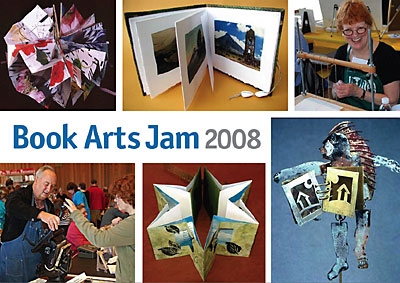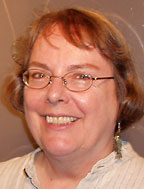Recently I asked members of the Bay Area Book Artists mailing list about criteria they use to apply to exhibits. I recently applied to several shows, and didn't get in. When I was doing
metalwork, I felt pretty good at picking shows to apply to. I certainly did get turned down plenty, but I had a sense of which shows would be likely. I knew for example that words like "elegant" or "refined" ruled out my work.
Below are some comments that I received from BABA members. If you would like to add anything, you can leave a comment, or email me at artATjudithhoffman.net. (change the "AT" to the symbol.) I'd love to hear more ideas.
from
Karen Koshgarian:
"After years of exhibiting, I've concluded that taking rejection personally doesn't serve me well. Unfortunately, the opposite is also true. Being included doesn't mean the work is sensational either, but sometimes fits with the "story" of the show.
"Case in point: I was included in the recent Lark publication 500 Handmade Books. The particular book that was accepted did not show the interior shot that would have made the book much more understandable. By showing only the cover, which had an airplane on it, it then became a companion to the spread. The book on the opposite page also had an airplane theme. HOWEVER, my book was a sequential, shocking look at September 11. It was not meant to be a pretty picture. Something was appealing about the cover, because it was also on the inside fly and as a pull-out, I can only guess it was because I used a three dimensional form with the cover. You couldn't even tell it was an altered book, which would have made more sense with the spine showing...I used the California State Legislator's Handbook for 2001. So in this case, yes it's nice to be in such a collection, but I can't make any meaning out of that, and still be sane!"
from Kay Hille-Hatten:
"From my observation curators putting shows together have a general idea or vision of the show, then when the applications come in they look at what they have and develop the look of the show. Artists with high quality work don't always get in because they end up not fitting into the "look" of the show. It can be frustrating both from a creative and financial point of view. When I've subsequently seen shows I was rejected from, I could tell what I had submitted didn't fit the look (of the show). I'm not sure this helps but it eased my frustration some when I realized what was happening."
from Conni Rizzuto:
"There is really no way to predict what may be accepted into an exhibit.
Selecting an exhibition that provides specific criteria that will be used to judge the books is a definite advantage. Knowing who will be doing the jurying also helps-- are they traditionalists, or do they open to artworks that test the boundaries of 'bookness'? Sometimes jurors will reject artworks because several similar ones were submitted.
"If there are 300-400 entries, only 10-20% of the entries may make it into a show. So having an idea of how many entries there have been in the past shows will give you some idea about the extent of the competition. You might find this on the gallery's web site in a press release or a blog about a previous exhibition. If not, call the galley and ask.
"One of the things that I do is look at the sponsor's web site to view the 'selected artwork' from previous exhibits. This gives me a fairly good indication of what the standards for selection might be.
"Finally, I usually try to name my artwork so that it is related to the theme of the exhibition. I make sure that my statement about the artwork clearly indicates its relationship to the theme."
from
Dorit Elisha:
"What I have done in the past is create a specific piece for that show when I saw an interesting theme or challenge. If it wasn't accepted I didn't care. I was happy to have gone through the process. I guess it's kinda getting in through the back door."
from
Lark Burkhart:
"It does seem as if it's a case of reading between the lines. I applied to the San Diego show too, and because I know the Atheneum tends to show more traditional work and also that there's a strong link between printmaking and book arts in the San Diego book arts community I submitted 3 of my codex-type books, 2 of which featured monotypes. And 2 were accepted."
The question of paying to show your work was also raised. Artists already pay for the photography, the shipping, and other related costs. I met an artist years ago who said he just quit entering shows. At that point in time he was known enough to be getting invitations to museum group shows, like the Craft and Folk Art Museum. And of course he had a lot more time to spend making art.
On a related note, Hariette Estel Berman has professional guidelines
here. The most relevant article is "Top Ten Tips for Getting Into a Juried Exhibition, Show, Book or Magazine." Hariette includes instructions to make a contact sheet in Photoshop to accompany digital images.
Labels: The business of art

